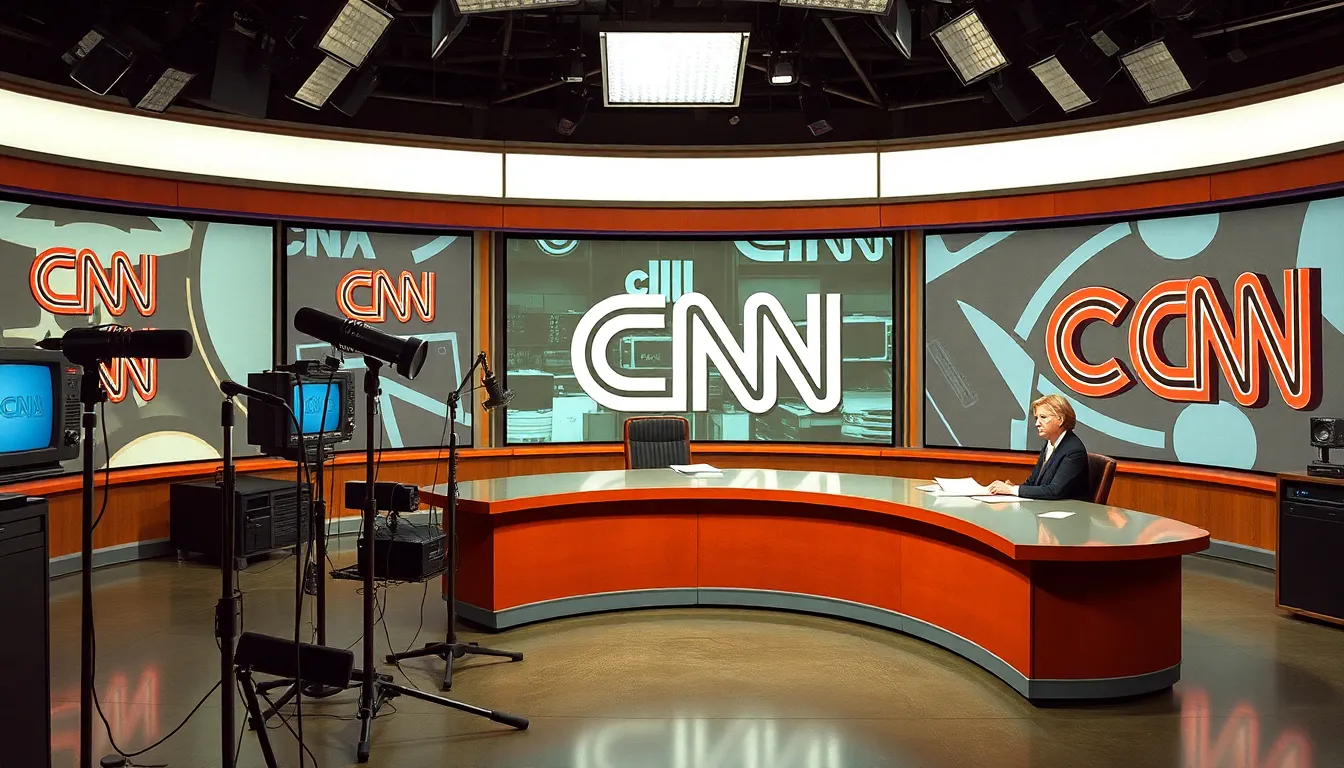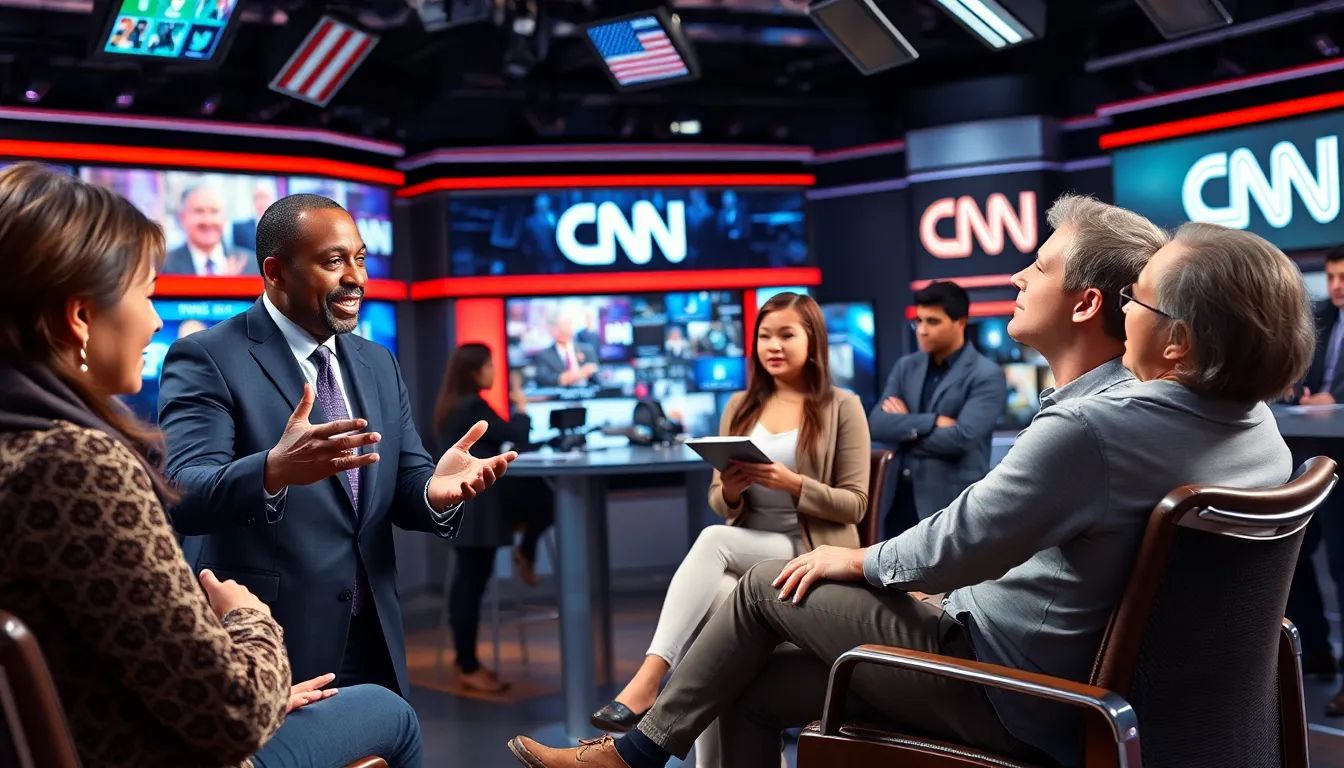In today’s polarized media landscape, the question of whether CNN leans right or left sparks heated debates among viewers and critics alike. As one of the most recognized news networks in the world, CNN’s editorial choices and coverage style have made it a focal point for discussions about media bias. Understanding its position on the political spectrum is crucial for discerning how news is presented and perceived.
Many people turn to CNN for its in-depth analysis and reporting, yet opinions vary on its political alignment. Some argue that its coverage skews liberal, while others claim it strives for balanced reporting. This article delves into the factors influencing CNN’s perceived bias, examining its programming, editorial decisions, and the impact of audience expectations on its journalistic integrity.
Table of Contents
ToggleOverview of CNN’s Political Orientation
CNN’s political orientation generates debate among viewers and critics. Some classify it as a left-leaning network due to its perceived focus on progressive issues, while others argue for a more centrist stance. This duality stems from CNN’s commitment to a diverse range of viewpoints, which often leads to contrasting interpretations of its reporting.
- Programs and Hosts: Certain programs and hosts, known for their liberal commentary, contribute to the perception of a left bias. Shows like “CNN Tonight” and “New Day” feature discussions that frequently align with progressive values.
- Editorial Choices: CNN’s editorial decisions shape how stories are covered. The network emphasizes fact-checking, often scrutinizing statements from conservative figures. This focus may create an impression of political bias among viewers who perceive it as unfavorable coverage of right-leaning narratives.
- Viewer Perception: Audience expectations and demographics influence perceptions of CNN. Historically, the network has attracted a more liberal audience, impacting how news stories resonate with viewers.
- Fact-Checking and Accountability: CNN prioritizes accuracy, frequently engaging in fact-checking across political spectrums. This approach enhances its credibility, even when critiques arise regarding perceived favoritism.
- Response to Criticism: CNN addresses claims of bias by highlighting its commitment to journalistic ethics. Network representatives stress the importance of balanced reporting, aiming to provide context and multiple perspectives on critical issues.
The ongoing evaluation of CNN’s political orientation reveals a complex relationship with its audience and the broader media landscape.
Historical Context of CNN’s Bias

CNN has undergone significant changes since its inception, shaping perceptions of its political bias. Understanding these developments provides insight into its current positioning within the media landscape.
Formation of CNN
CNN launched in 1980 as the first 24-hour news channel. Founded by Ted Turner and Reese Schonfeld, its mission focused on delivering breaking news and comprehensive coverage. The network initially garnered respect for its groundbreaking approach to real-time reporting. As CNN expanded, it aimed to attract a wide audience, providing diverse viewpoints. During its early years, coverage often shaped public perception by addressing major political events.
Shift in Programming and Editorial Choices
Over the years, CNN’s programming and editorial choices have evolved, impacting its political leanings. In the 1990s, the network embraced a more liberal editorial voice, particularly during significant national events, such as the Gulf War and the Monica Lewinsky scandal. This shift led to criticisms of bias from more conservative audiences.
In the 2000s, CNN adopted an increasingly competitive stance against rival networks, resulting in a blend of opinion-based segments alongside traditional reporting. Programs featuring liberal commentators, such as Anderson Cooper and Don Lemon, reinforced perceptions of a left-leaning bias. Conversely, CNN’s commitment to fact-checking during political coverage, including scrutinizing conservative figures, sparked debates about impartiality.
Presently, CNN seeks a balance between delivering news and catering to its diverse audience. While striving for credibility, the network faces ongoing scrutiny regarding its editorial choices and perceived leanings.
Analysis of CNN’s Content
CNN’s content features a blend of news reporting and opinion pieces, which contributes to the ongoing debate about the network’s political orientation. Analyzing these components reveals insights into CNN’s editorial approach and its impact on audience perceptions.
News Reporting
CNN emphasizes fact-based reporting, focusing on accuracy and accountability in its news delivery. The network covers a wide array of topics, including politics, health, and international affairs. Its commitment to journalistic integrity includes rigorous fact-checking procedures, particularly in politically charged contexts. By providing a platform for diverse viewpoints, CNN aims to present balanced coverage, although critics often highlight instances where the framing of stories may sway interpretation. Despite perceptions of bias, CNN’s intent remains to inform its audience with reliable information.
Opinion Pieces and Analysis
CNN’s opinion segments feature commentary from various contributors, including experts, journalists, and political analysts. These pieces often reflect a range of perspectives, though viewers may perceive a liberal tilt due to the prominence of progressive voices within the commentary. High-profile programs feature discussions on relevant social issues, which can amplify the perception of bias among conservative audiences. The editorial decisions surrounding these opinion pieces generate debates regarding CNN’s balance, as the line between analysis and advocacy becomes increasingly blurred. By showcasing a variety of opinions, CNN claims a commitment to thorough discourse while facing criticism for potentially favoring certain viewpoints.
Public Perception of CNN’s Bias
Public perception of CNN’s bias remains a topic of significant discussion, with various factors influencing opinions on the network’s political orientation.
Audience Demographics
Audience demographics play a crucial role in shaping perceptions of CNN’s political bias. Historically, CNN attracts a more liberal audience, primarily consisting of younger, urban viewers who tend to align with progressive values. This demographic influence skews the perception of CNN as left-leaning. In contrast, older and more conservative viewers often see CNN’s coverage as biased against their beliefs, reinforcing division in audience perceptions. The diversity of perspectives within its audience contributes to the ongoing debate about CNN’s objectivity, as different demographic segments interpret its content through their political lenses.
Polling Data on Perceived Bias
Polling data consistently reflects public opinions on CNN’s perceived bias. Recent surveys indicate that approximately 59% of respondents categorize CNN as a liberal news source. In contrast, only 25% view it as centrist or conservative. These figures highlight a significant perception of left-leaning coverage among the general public. Furthermore, studies show that partisan affiliations greatly influence perceptions; self-identified Democrats are more likely to view CNN favorably, whereas Republicans frequently criticize the network for bias. Such polling results underscore the importance of audience expectations and political affiliations in shaping the narrative around CNN’s editorial choices.
Comparison with Other News Outlets
CNN’s political orientation often draws comparisons with other prominent news outlets, particularly Fox News and MSNBC. These comparisons highlight distinct editorial approaches and audience receptions.
CNN vs. Fox News
CNN and Fox News represent contrasting ideological perspectives in the media landscape. CNN, often perceived as left-leaning, focuses on progressive issues and fact-based reporting. Fox News, on the other hand, is widely regarded as conservative, emphasizing libertarian values and right-leaning narratives. Poll data shows that approximately 70% of Fox News viewers identify as Republicans or lean towards conservative beliefs, while a significant portion of CNN’s audience aligns with Democrats. The differences in audience demographics contribute to divergent perceptions, with CNN often criticized by conservative viewers who see its coverage as biased against their viewpoints.
CNN vs. MSNBC
CNN and MSNBC both lean toward liberal ideologies but exhibit notable differences in tone and content. CNN aims for a blend of news reporting and opinion, striving for balance and diverse viewpoints. MSNBC, however, tends to feature a more overtly progressive perspective, particularly in its prime-time programming. Polls indicate that about 68% of MSNBC’s audience identifies as liberal, compared to around 59% for CNN. This demographic variation influences viewer expectations and critiques, with many Democrats viewing MSNBC as more aligned with their values. Overall, while both networks attract a liberal audience, MSNBC’s distinct editorial slant sets it apart from CNN’s approach.
Determining CNN’s political bias remains a nuanced discussion shaped by audience perceptions and editorial choices. While many viewers classify the network as left-leaning due to its focus on progressive issues and liberal commentary, others argue for a more balanced approach. This complexity reflects the diverse expectations of its audience and the evolving media landscape.
CNN’s commitment to fact-checking and journalistic integrity serves to enhance its credibility, even amid critiques of bias. As the network continues to adapt its programming, the debate about its political orientation will likely persist, illustrating the intricate relationship between media outlets and their viewers. Understanding this dynamic is essential for navigating today’s media environment.



